The following is an edited transcript of remarks made by Franco-Nevada CEO David Harquail at The Northern Miner’s Canadian Mining Symposium held at Canada House in London, U.K., on May 22, 2019, speaking in his role as chair of the World Gold Council, followed by a brief question and answer session. For the full audio, listen to Episode 142 of The Northern Miner Podcast.
_________________________
David Harquail: Thank you High Commissioner Julie Charette and Canada House for your hospitality. I’d also like to thank The Northern Miner. It’s an honour to be a keynote speaker today. My dad was a mining exploration person as well, and I grew up reading the Miner so I think it’s very fitting to be here today.
The third thing: I’m just very happy to be in London. I come every year, I’ve been doing it for almost 30 years to talk about mining investments, and it’s always a pleasure.
A couple of years ago I was honoured to be invited to Buckingham Palace and I was coached how, if royalty approached me, to address them as “Your Royal Highness” and subsequently, “Sir.” And I had my Franco-Nevada hat on.
Prince Philip came up to me, the Duke of Edinburgh, and shook my hand. He said, “What do you do?”
And so I said, “Your Royal Highness, I’m in the royalty business too, and I collect royalties from gold mines all around the world.”
But I carried on and said, “I’m very impressed by all the gold you have in Buckingham Palace.”
And he said, “You can’t have my gold!”
That’s exactly the right attitude. Gold is precious, it’s something that needs to be protected. Most of what I want to talk about right now is how we’re doing that with the World Gold Council.
My message today is that the gold industry is perhaps too complacent about the gold price. That we spend more time marketing equity than we do actually worrying about our core product.
We’re unique as an industry because we’re one of the few industries that produces a lot more than is consumed. If you look back over millennia, we’ve created a stockpile of gold at surface right now that swamps any annual production that we have of gold.
What I like to sort of scare mining CEOs about, is that half the gold is in jewellery. So we say, “Okay, that’s fabricated, that’s likely to stay in jewelry.”
But the other half of gold, about US$4 trillion worth, is sitting there in bar forms, in wafers, in coins. It’s highly liquid. I like to have that image of this liquid pond being held back by a tailings impoundment wall.
And this is something that’s vitally important, is that we have to, as an industry, be able to convince those people that are holding gold to maintain it and even buy more each year, if we’re going to have compelling stories in an industry.
If we’re not paranoid about this, just look back at what happened just recently. In the early 1970s, we had net selling by the central banks, and they represented right today about one and a half trillion of the gold that’s in the marketplace, that really liquid stuff. And we’re in a phase where there was a breach at that tailings impoundment wall. That gold was being sold aggressively by central banks 30 years ago, and then 20 years ago, in this town, Gordon Brown set the bottom of the market by selling the Bank of England gold reserves.
It was a terrible precedent because all the other central banks were following that lead.
What you could see is that the World Gold Council provided a tremendous service to the industry by spearheading the Central Bank Gold Agreement. This was done in 1999. It didn’t stop gold selling, but what it did was slow down what was an acceleration of gold sells.
Each central bank was actually competing to try to sell gold ahead of the other bank. And I think that slow down was very helpful for the industry because it could have been more of a catastrophe.
The other irony is that we all suffered through the global financial crisis, but gold companies’ CEOs should be on their knees thanking God that there was a global financial crisis because that, in 2007, is what turned central banks into buyers of gold.
We eliminated the net selling of gold. And so we’ve been the biggest beneficiary of the global financial crisis because we have now had a systemic change in the gold market with the central banks buying.
What the World Gold Council has been doing now is making sure that not only does that stay up there, but can we accelerate that trend further?
And I think they’re doing some excellent work. The World Gold Council has been the leader in terms of helping the industry make sure that the central bankers appreciate the asset that they have, that it has a true monetary value, and a true value as a central bank asset.
The World Gold Council is working right now with 140 of 158 central banks around the world, and we’re the trusted advisor to the banks. We’re providing education and symposiums in schools and accounting policies for the central bankers where they attend universities here in the U.K. or in the U.S., China or Singapore.
What we do is we get the central bankers together in a room. They all see positive reinforcements between each other. They learn how to account for gold, and they see this as a tremendous service.
The central bankers, just earlier this year, awarded the World Gold Council the Central Banking Award for being a trusted advisor and supporter to them.
This is all paying a lot of dividends to us in the first quarter of this year. It was a record amount of buying by central banking since 1972, since we delinked the dollar to gold. It is a very positive trend already starting for this year. Last year was a record, and we’re already on track to be a record again for this year. And the World Gold Council is playing an important role in this.
But that’s US$1.5 trillion of the US$4 trillion I’m telling you is behind that impoundment wall.
Are we doing a good job on the rest of it?
Looking at institutional investors, this slide shows a survey of U.S. and European pension funds, and this was just done late in 2018. And gold is the last thing they’re thinking about in terms of an asset class to have in their portfolios.
This tells us we have a lot of work to do on the sector. It’s a risk, but it’s also a huge opportunity for us.
There’s US$186 trillion of financial assets invested in the world, but less than 1% is held in gold. And yet you ask John Reade, our market strategist who’s here today, he’ll tell you the sort of the optimal weighting is probably closer to 4% in any portfolio because it has a negative correlation to other assets.
If we can do a good job of convincing institutions that they should have just a bit more gold, if we ever got them to the full 4% weighting, that’s another US$6 trillion of demand for gold, which is much more than the stockpile we have right now.
So even a partial move could change the entire tone of the industry.
That’s the opportunity, and one of the things the World Gold Council is trying to pursue right now.
In terms of how do we get the institutions to be interested in gold, they’ve told us quite a few things: they need better market information; they need to have better visibility of how gold is traded and the volumes behind it; and better perspective in terms of the efficiency and fairness of the marketplace.
If we can get some of those things delivered, we would have less penalties for a number of the regulars in the business.
If we can get that, we’re going to have a much better gold market that is core to the World Gold Council’s activities today.
A lot of this in terms of influencing decisions, is just pure research, providing data to the marketplace.
The World Gold Council has been doing this for 30 years, but we’ve stepped up the game. You’ll find in the last six months there’s been two new products that have been provided by the World Gold Council beyond the ones you see in terms of the Gold Demand Trends and Gold Insights, and this is the Gold Hub.
The Gold Hub is unique database right now for institutional investors, where they have now all the data they need to do their own modeling in terms of the investment demand for gold by geography or physical demand for gold by geography.
We can suggest various models for them in terms of how to model the gold market, but we can’t be an advisor. But what we can do is say, “Here are the tools in front of you, and you can go forward with that.”
The other tool that’s now available is a gold valuation framework. If you have your own portfolio as an institutional investor, and depending on the type of assets you have in that portfolio, what is the right amount of gold? A little bit of gold — 1%, 2%, 5% of that portfolio — what does it do to your risk-return in various market environments?
These are brand new free products that have just been launched. John Reade, if you could just stand for a minute, I’m going to embarrass you. He’s the pioneer doing this. Ask him any questions because it’s a product that we think is going to help institutional investors be much more effective in terms of treating gold as an institutional asset.
It’s something that’s available from the World Gold Council today, and so please take advantage of that.
The World Gold Council is also trying to make it easier to both buy gold and trade gold. You will remember that the World Gold Council pioneered the first major gold ETF: the GLD on New York, partnering with State Street in 2004.
And today it’s about a $30 billion asset. I had the privilege last year to go visit the safe in a secret location here in London. It’s very impressive, a room this size, gold stacked up. I did count the bars roughly myself just to make sure it was all there so I can personally vouch for it. It’s a pleasure there, we did that, and it’s actually been the pioneer for a lot of other funds.
There’s now 70 billion other dollars’ worth of gold tied up in other ETFs around the world in Europe, and Asia, and United States. So, it’s $100 billion from something that World Gold Council pioneered.
But some of these products aren’t suited for everybody, and so, what the World Gold Council has been doing is pioneering new products.
Last summer we launched a new product called the GLDM, or the mini GLD. And what this is designed for, is a lot of investors today buy their gold on platforms, such as TD Ameritrade, Schwab, they have a Roth account or 401(k) retirement account.
What we’ve done now has made it easy for these platforms to say you can make gold now and offerings. So you can buy equities, you can buy fixed income, and you can buy a little piece of gold. And what’s great about these retirement accounts, it’s sticky gold.
We have about US$650 million now on the GLD Mini. It’s all buying, virtually no selling. And we think this is a new product that’s going to continue to grow. So we see this as a new product that’ll take more gold from the marketplace, and it’ll help to support and sustain gold demand.
The other aspect of the World Gold Council is new trading platforms for gold. The environment of price fixes, it’s not a popular thing nowadays, and over-the counter-markets.
What regulars really want to see is fair, transparent markets that are efficient.
And so more clearing markets such as we have with the Shanghai Gold Exchange, which the World Gold Council has been an advisor and a participant in terms of helping that get launched, and subsequent products such as the benchmark price on the Shanghai Gold Exchange. And also with LMEprecious, which is a new project.
We’re getting good traction now. Not all the players are yet involved in it, but again, we think these trading platforms are part of the future for helping provide better platforms for trading gold and making it something that even lot more institutions can participate.
And, of course, a fundamental is gold demand on a physical basis around the world. The World Gold Council has been present in India and China for almost 30 years. One thing that’s happened is in China, the Chinese have actually listened, and they’ve formed policies in the early 2000s that have been very friendly to gold.
So not only is there a retail market for gold in China right now, but there’s a regulatory environment in China that now allows their pension funds to buy physical gold in their pension fund. It allows your mutual funds to buy gold, it allows their insurance companies to have gold in their portfolios, because they truly believe the science, that gold is something that actually will improve your risk returns over a cycle and make your portfolio returns more and more powerful.
We’d like the rest of the world to be able to accept the same philosophies and have a regulatory environment that is as open for our financial institutions to buy physical gold or other gold products in their portfolios.
There’s a lot of policy work done in China, I don’t need to read you through, but the fundamental time was back in 2001, 2004 when they set the policies for creating the modern gold market.
Now you have fintech applications in China that are very reliable. You don’t have to worry about the counter-party risk.
The World Gold Council has been working very hard in India as well. It’s just a lot slower there, but we’re getting more traction. I just look at it and we’re 15 years behind in India.
But if we could do anything [in India] that was happening in China in terms of making it a more modern market and something more receptive to the mainstream, there’s huge potential there as well to expand the demand for gold and uses of gold to a broader market.
In terms of the other efforts by the World Gold Council, there are very nice wins.
One thing that was done just in the last two years is the World Gold Council was a pioneer in helping the Islamic world to try to rationalize whether gold was Sharia-compliant.
Believe it or not, we know the Muslim world likes gold, but it was never clear whether it was compliant.
And so that issue is now resolved. We’ve now did research on what is required for buying or trading gold and doing it within a compliant policy so that any country now can buy it and not be concerned that some cleric would say, “You haven’t bought the gold properly.”
We’re now seeing the benefit and a number of now Sharia-compliant trading exchanges are being set up in the Middle East, a number of funds that are now promoting to Muslim investors Sharia-compliant funds.
So it’s possible now we can expand that market as well.
We’ve been active in policies with other governments. Right now, the highest VAT on gold in the world is in Russia. So that’s an obvious target, and the World Gold Council has been providing support to the various parties and the industry itself in Russia.
That support has been helpful and we’re very optimistic that something will soon be passed to help make it easier for the retail market in Russia to buy gold. Our fingers are crossed this will come across the line soon.
But there are similar efforts happening in other jurisdictions to try to get better treatment for tax equalization. Gold is sometimes taxed at a higher rate in other countries than other products.
We’re fighting to get gold treated as a mainstay asset and be maybe less regulated against as we have in some jurisdictions.
So there’s been an of evolution in terms of what the World Gold Council has been about. I look at my original pioneers that set up the World Gold Council in 1987: Peter Ghosh, Harry Conger, Dale Hendrick.
These guys came from the big global mining companies, and they said, “We have to do something similar to what De Beers is doing to protect the market.”
The original focus was jewellery marketing and research.
Well, the focus has moved away from jewellery marketing now because we think the best value-add for the industry is focusing on these other policies, central bank initiatives, and the investment market and regulatory market for gold.
These trends change a bit with the membership. But I like to say that all this work is hugely valuable, and if we didn’t have the World Gold Council, we would need to create it right now.
These initiatives are the deliverables that we have for the gold industry, and have tremendous value.
Members are paying 10 cents an annual ounce of production to be a member of the World Gold Council, because it’s essentially self-financing from the money we make from the ETFs.
I like to tell members of the mining industry: this is the best 10 cents in your cost structure in terms of maintaining the veracity of our industry, making it an investment destination, and making it something attractive to investors around the world.
We’re blessed to have it, and I thank the members that we have for the World Gold Council. We have 26 companies — even Mark Bristow now is a member of the World Gold Council. And we represent over half of the corporate gold that’s produced around the world.
The Northern Miner: We’re just a 10-minute walk away from the world headquarters of the World Gold Council. And there’s been a tradition in the last few years of Canadian mining executives being the chair. But some big news this year is there was a new CEO, David Tait, appointed in February 2019, coming from the financial sector. And some nice trivia about David: he’s raised over £1 million for charity by climbing Mount Everest five times. So, with him coming on board, are there some new initiatives that he’s going to work on?
David Harquail: Well, the first initiative is to get in The Guinness Book of World Records because the first mine he visited was Mponeng in South Africa, and he went to the absolute lowest levels. So he’s now getting registered in the book for doing the largest vertical on earth, from the bottom of Mponeng up to the top of Everest. You’ll see that hopefully sometime later this year in The Guinness Book of Records.
The last CEO of the World Gold Council did a tremendous job, Aram Shishmanian. He was with us for 10 and a half years.
We’ve been redoing the governance of the World Gold Council. We have a broader set of committees now running it, and it made sense to change the CEO.
So it’s a refreshing of the whole way we run it. There’s a lot of engagement right now by the gold companies in terms of Newmont’s Gary Goldberg, who’s been very active on a new ESG initiative that’s going to be coming out later this summer for the gold industry. AngloGold Ashanti’s Kelvin Dushnisky now is the vice-chair, now he’s in line to succeed me next year on the World Gold Council. We also have the Australians now being very active: Mick Wilkes of OceanaGold, Sandeep Biswas of Newcrest, they’re taking roles now on the executive for it.
We’re getting a much better interaction between the members on a broader basis than we had in the past and with a management team that are really doing a great job there.
TNM: Let’s talk about growing your membership. You gave a bit of your pitch there, but that 10 cents — is that the resistance for others joining or is there another reason?
DH: No, there are different reasons because one of the things is, we do have standards. We pioneered the all-in-sustaining-cost standard. We came up with new guidance because some of the members were drifting in terms of how they were doing the accounting.
We’re saying, if you’re a member, you should really be following the standards you have for cost accounting.
Also, we’re pushing the industry as a whole to go to a higher level on ESG standards, and we have the principles agreed to internally. We’ve actually been floating them in the marketplace in terms of what we think the industry should be doing.
It’s going to be hard for some companies to come in saying, “You want us to have third-party verification on these very aspects of our industry and we have to do it over this certain number of years?”
Yes, it’s going to be tougher.
The harder part is actually getting up to the standard that we want to have of the industry.
We think it’s going to make it a better investment destination, but not every company can do it. So, the 10 cents is just nominal, we don’t need that.
But we need to say you have to have some commitment to join, but the harder commitment is to live up to the standards that are going to get tougher over the next few years.

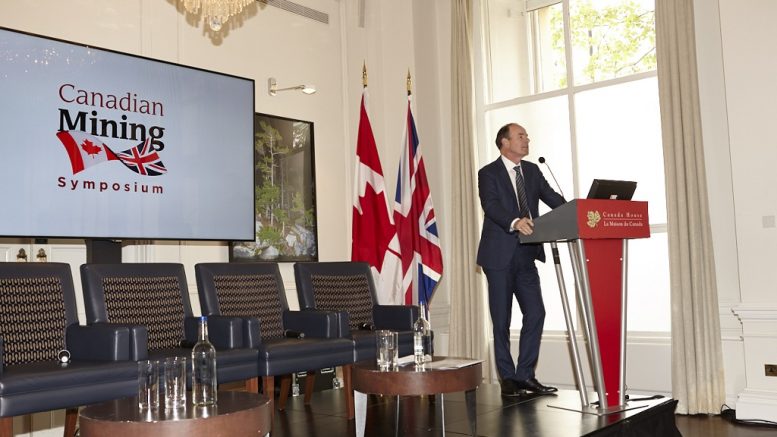
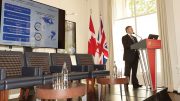
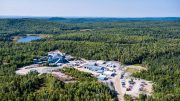
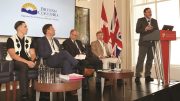
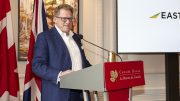
David Harquail’s talk at Canada House on May 22, 2019 about the outstanding success David had brought to Franco-Nevada as CEO has really enriched the shareholders.